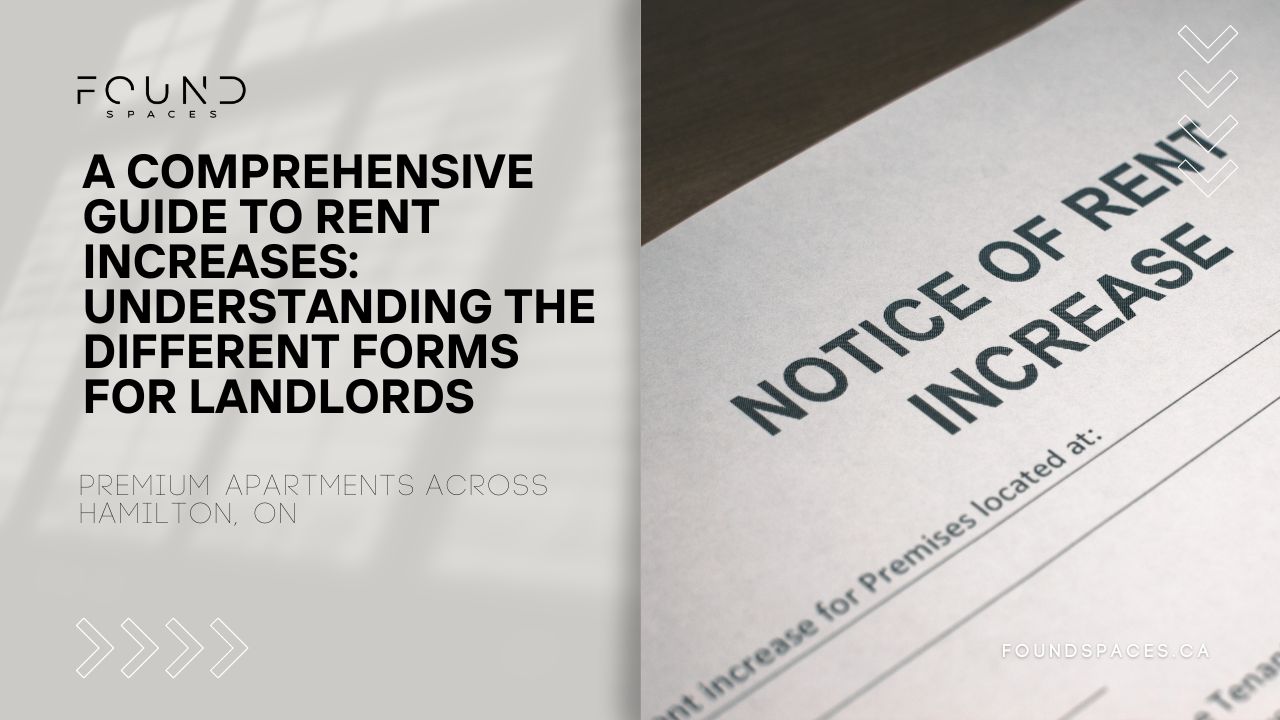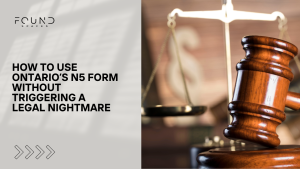For landlords, understanding the nuances of rent increase form regulations is essential for maintaining a lawful and profitable rental property. The process varies depending on the type of rental unit and its exemption status under the Residential Tenancies Act, 2006 (RTA). This post will guide you through different forms and scenarios for increasing rent, focusing on partially exempt rental units.
Understanding Partial Exemptions under RTA
Partially exempt rental units, including certain non-profit and social housing units and care home units exempt from rent increase limits, have different rules. If your unit falls under this category, you have more flexibility in setting rent increases.
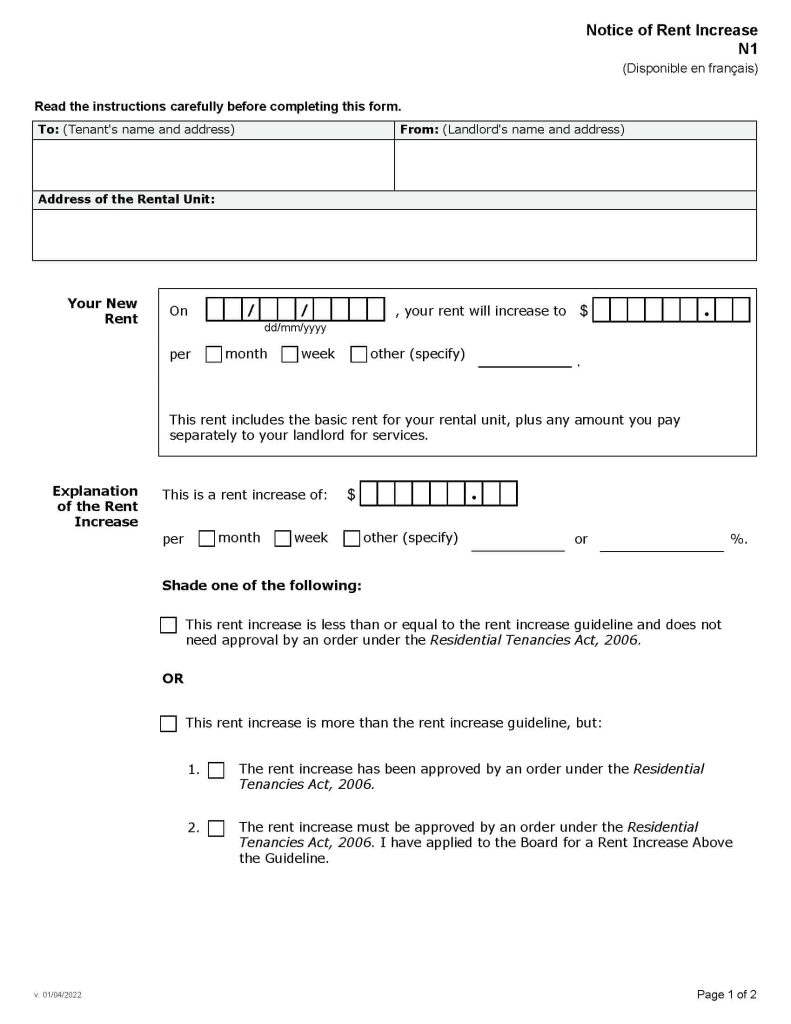
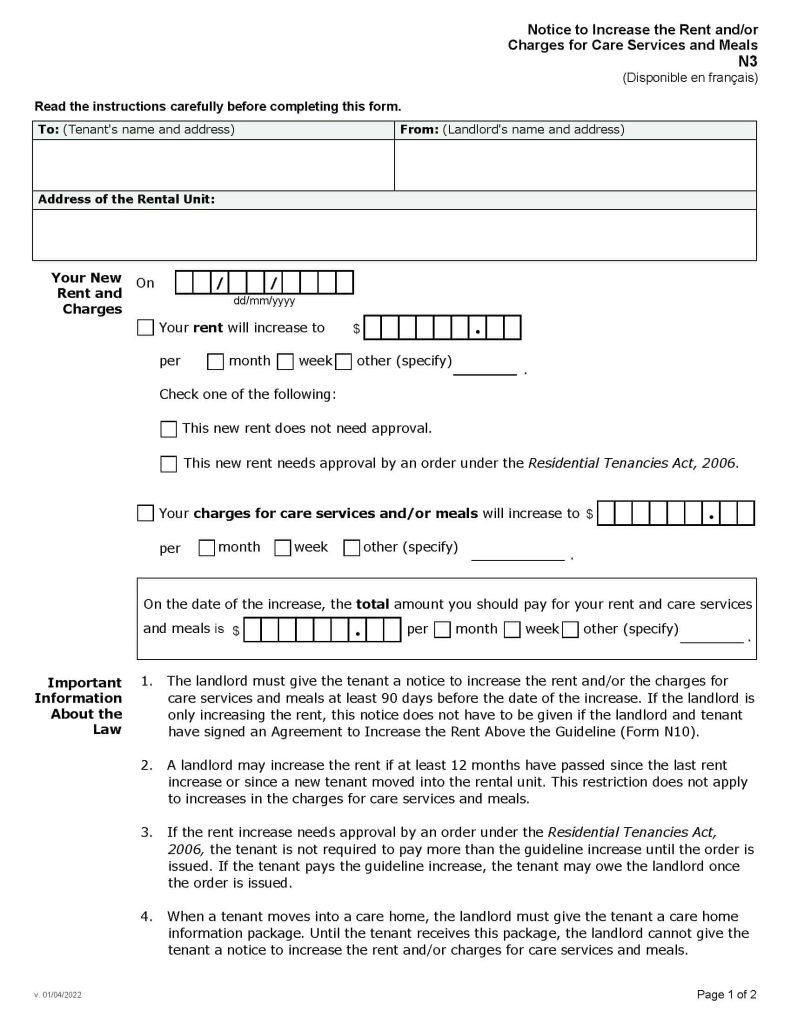
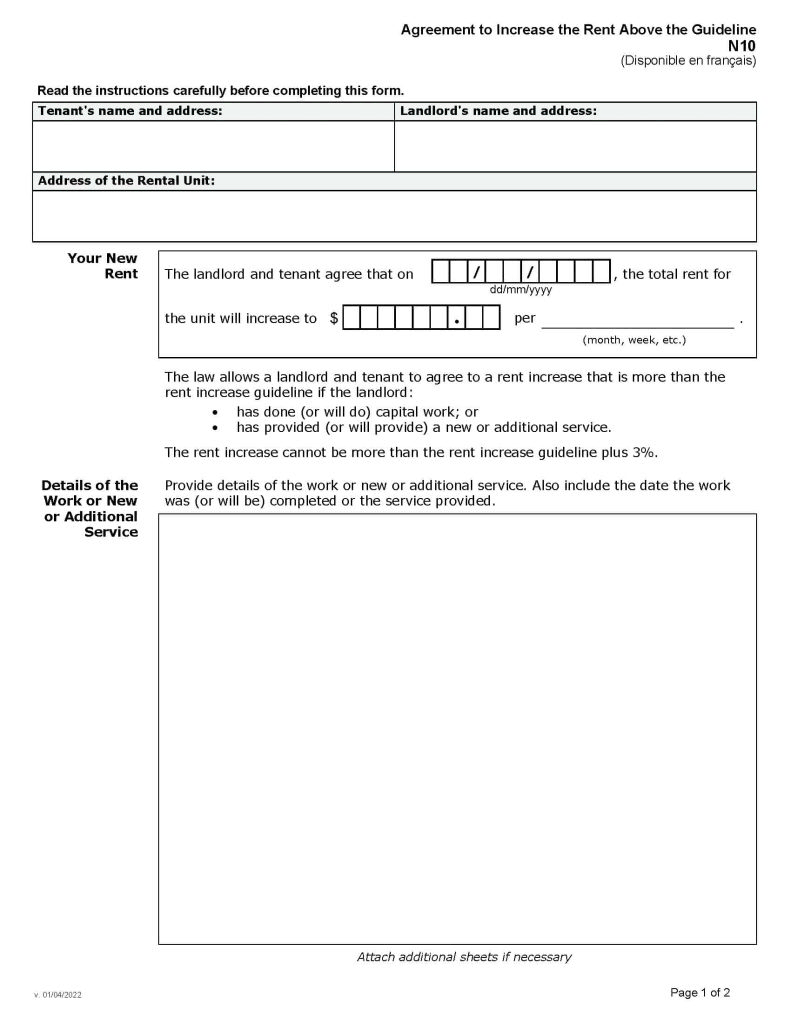
Rent Increase Forms:
- Form N2: For units partially exempt from the RTA, landlords can use Form N2 to increase rent. This form applies to units where the standard rent increase guideline does not apply, allowing landlords to set their own increase rates.
- Form N1: This is the standard form for rent increases in most rental units covered by RTA’s rent increase rules.
- Form N3: For care home units covered by RTA’s rent increase rules, landlords should use Form N3 to increase rent and/or charges for care services and meals.
- Form N10: Used when landlords and tenants agree to a rent increase above the guideline for capital work or new services.
Procedure for Rent Increase
- Timing: A minimum of 12 months must have passed since the last rent increase or the tenant’s move-in date. This also applies if the rental unit was assigned to a new tenant within the past 12 months.
- Notice Period: Landlords must provide at least 90 days’ notice before the rent increase takes effect.
Completing the Notice
- Accuracy is Crucial: Fill in tenant names, landlord details, and the rental unit address. Incorrectly completed forms can invalidate the notice.
- Rent Details: Specify the new rent amount, the date of increase, and the rent payment frequency.
- Signing the Notice: Ensure the landlord or representative signs the form, providing contact details.

Delivering the Notice
You can deliver the notice in various ways, including hand delivery, mailbox, under the door, fax, courier, or mail. However, posting it on the tenant’s door is not permitted.
Navigating rent increases requires careful adherence to legal guidelines and proper use of forms. Understanding these forms and procedures ensures compliance with the law while managing your rental property effectively.

